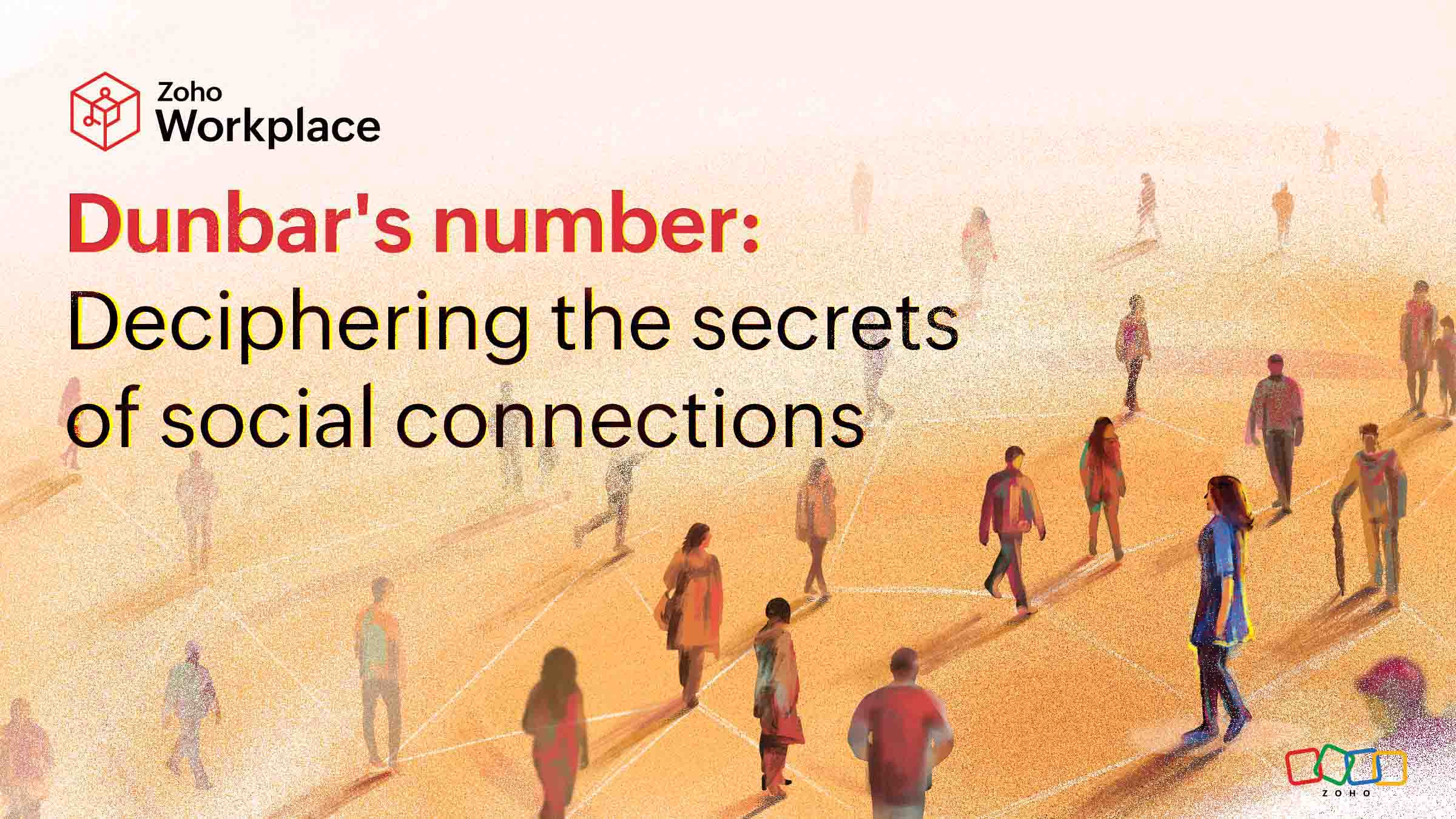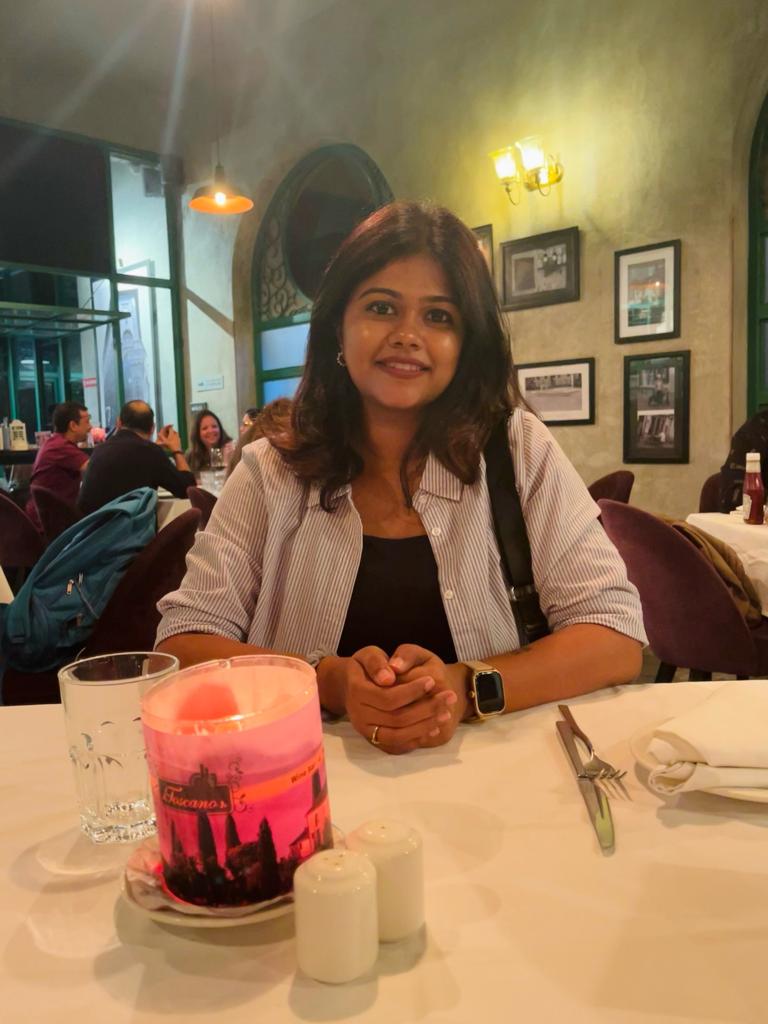- HOME
- All Products
- Collaboration
- Dunbar's number: Deciphering the secrets of social connections
Dunbar's number: Deciphering the secrets of social connections
- Published : April 1, 2024
- Last Updated : August 22, 2024
- 993 Views
- 7 Min Read
I think you must have had a compelling reason to open this article as soon as you read the title, right? And I'm sure you'll continue reading at least until you find out what “Dunbar's number” is and what it’s all about. But instead of merely quoting it, I’d like to take you on a short journey with me. My hope is that by the end of this article, you’ll be comfortable enough to delete at least a couple of contacts from your phone or catch up with a close friend for dinner. Confused? You'll understand soon. But first, let me introduce you to Lily.
In the heart of a bustling city, amidst the hustle and bustle of everyday life, lived Lily. She was preparing for a reunion—a gathering of relatives from near and far, all coming together under one roof. As she sat down to finalize the guest list, she was overwhelmed by the sheer number of names on her list.
With a pen in one hand and a cup of tea in the other, Lily gazed out her window, watching people hurry by like ants on a mission. In the midst of this chaos, she felt a pang of uncertainty. How could she possibly decide who to invite from her extensive network of family and friends?
The invitations fluttered from her hands because the fan was on, and she couldn't help but notice something about human connections. It was as if she was standing at the edge of a vast forest, unsure of which path to take. Some relations were like sturdy oaks, their branches intertwined with hers in a timeless dance of companionship. Others were like delicate wildflowers, blooming briefly before fading away.
Now, imagine you're Lily and see if you can relate to her. Upon reflection, it might surprise you that you actually share a strong bond only with a certain number of people. In fact, probably only a handful of those relationships have withstood the test of time, while others may have faded away like leaves blowing in the wind.
With this picture in your mind, let's dive into an intriguing concept called Dunbar's number. So, settle into your own comfortable spot, maybe with a refreshing drink nearby, and let's delve into this fascinating phenomenon together.

A brief history of Dunbar's number
Back in the early 1990s, a brilliant anthropologist named Robin Dunbar was busy pondering the complexities of primate social behavior. As he dug deeper into his research, studying various species from monkeys to apes, he stumbled upon an interesting correlation. It appeared that there was a direct relationship between the size of a primate's brain, particularly the neocortex (the part responsible for social interactions) and the size of their social groups.
Armed with this insight, Dunbar proposed a groundbreaking theory: There's a cognitive limit to the number of stable relationships humans can maintain. And thus, Dunbar's number was born—a magical figure hovering around 150, give or take a few dozen.
The 150 rule
While planning her reunion, Lily happened to come across Dunbar's number, a concept that invoked curiosity in her. She started reading about it. Afterward, she felt a wash of clarity. She realized that Dunbar's number is like a personal compass, a guide through the maze of human connections.
So, what exactly is Dunbar's number and how can I relate to it, you ask?
Let's say you're at the center of a bustling party, surrounded by a whirlwind of faces, names, and conversations. In this chaotic environment, Dunbar's number serves as a beacon of clarity. It represents the maximum number of meaningful relationships you can comfortably maintain.
You definitely can’t stuff everyone you know into one category of friends, right? So, let's split them up into two. There's an inner circle, those ride-or-die friends and family members who have your back no matter what. Then there's the outer circle—acquaintances, coworkers, and other friendly faces you encounter in your day-to-day life. Somewhere in between lies the sweet spot of around 150 connections.
But here's the kicker: Dunbar's number isn't just about counting heads; it's about understanding the intricacies of the human relationships that you share. Sure, you might have thousands of followers on social media or a mile-long contact list on your phone. But when it comes down to it, how many of those connections are truly meaningful? Think about that for a moment.
Is Dunbar’s number a myth?
Now if you’re still not convinced with this theory, you have every right to think of it as a bunch of hocus-pocus. Don’t worry. You’re not alone in your skepticism. In fact, some would argue that Dunbar's number is too simplistic to capture the nuances of human social networks so accurately. They point to exceptions—individuals with limitless friend lists that far exceed the 150-person threshold—as evidence that the theory might not be entirely true.
But the fact is that Dunbar's number isn't meant to be a one-size-fits-all solution. It's more like a guideline, a rough estimate based on the patterns observed in primate behavior. And while there are certainly exceptions to the rule, the underlying principle still holds true for the majority of human interactions. Let's look at it another way. Just because you know someone who can eat an entire pizza in one sitting doesn't mean the average person can do the same. We all have our own quirks, don't we?
So, the next time someone tries to dismiss Dunbar's number as a myth, remember that it's not about being right or wrong; it's about understanding human behavior and using that knowledge to navigate the complex web of social connections that make life so interesting.
Putting the concept of Dunbar’s number to work
After getting the hang of this concept, Lily wondered how she could put it to work in her own life. Could she use it as a tool for self-reflection? If she did, how would it help her?
Applying Dunbar's number in practical scenarios can greatly enhance your social interactions and overall well-being. Here are some pragmatic approaches to help you navigate human relationships effectively.
Spend quality time with your close circle
Allocate more time and energy towards nurturing relationships within your inner circle—those close friends and family members who have stood by you through thick and thin. Schedule regular meetups, phone calls, or virtual hangouts to deepen these bonds and create lasting memories.
Review your social media connections
Take a critical look at your social media networks and streamline your friend or follower lists. Unfollow or unfriend individuals with whom you lack a meaningful connection, and prioritize interactions with those who genuinely enrich your online experience. Quality interactions are always more fulfilling than chasing high follower counts.
Practice active listening
Effective communication is key to maintaining healthy relationships. Put that into action by giving your full attention to the person you're conversing with. Validate their thoughts and feelings, ask probing questions, and show empathy towards their experiences. By being present and attentive, you can strengthen the connection between you and your loved ones.
Set boundaries
Setting healthy boundaries is essential for preserving your mental and emotional well-being. Learn to say no to activities or commitments that drain your energy and prioritize self-care. By keeping clear-cut boundaries, you can create space for meaningful interactions with those who truly value and respect your needs.
Manage expectation
Managing expectations involves being realistic about what you can reasonably provide and what you expect in return from your connections. Align your expectations with reality and reduce the likelihood of misunderstandings or disappointments, creating a foundation for more fulfilling and harmonious interactions.
Embrace vulnerability
True intimacy requires vulnerability—the willingness to open up and share your authentic self with others. Don't be afraid to express your emotions, insecurities, and vulnerabilities with trusted friends and family members. By allowing yourself to be seen and heard, you can deepen your connections and build a greater sense of intimacy.
Practice gratitude and appreciation
Express gratitude and appreciation towards the people in your life who bring value and joy. Send handwritten notes, express heartfelt compliments, or simply spend quality time together to reinforce the importance of your connection. Showing appreciation strengthens relationships and fosters a sense of mutual respect and admiration.
Invest in shared interests and activities
Establish connections based on shared interests and hobbies. Join clubs, classes, or community groups centered around activities you enjoy, providing opportunities to meet like-minded individuals and cultivate new friendships. Shared experiences create strong bonds and offer a natural foundation for meaningful relationships.
Prioritize self-care and personal growth
Engage in recreational activities that nourish your mind, body, and spirit, such as exercise, meditation, or creative pursuits. By making your well-being your first priority, you develop resilience and can be yourself at all times.
These practical strategies will let you leverage Dunbar's number to approach human relationships with intentionality and fulfillment. Remember, nurturing and maintenance requires conscious effort and time, but they reward us with the most genuine and beautiful relationships that are invaluable.
Lily's reflection and conclusion
Lily's journey of exploring Dunbar's number helped her walk through the road of human social interaction. She realized that it's actually better to focus on what truly matters, to nurture the relationships that bring her happiness, and to subtly let go of the ones that no longer hold any value.
Sometimes, it's okay to prioritize your time and energy, focusing on the connections that matter most while gradually letting go of the ones that no longer serve you. It might feel uncomfortable at first, like pruning a tree or cleaning out your closet. But trust me, the end result will be worth it—a tighter-knit social circle filled with genuine connections and meaningful interactions.
And don't forget to give yourself permission to be selective. Just because you can technically maintain 150 relationships doesn't mean you have to. Remember, quality always trumps quantity. So, the next time you're feeling overwhelmed by the chaos of modern life, take a deep breath, remember Dunbar's number, and trust that you're exactly where you need to be!
 Anjana Balaji
Anjana BalajiAnjana is a passionate marketer who works for Zoho. Apart from the crazy movie buff that she is, she's also a trained musician and a creative home-chef!



Comments(2)
Yes its ture..The words " to nurture the relationships that bring happiness, and to subtly let go of the ones that no longer hold any value" is very practial. I found my Dunbar number is 1/5 th of average
Conclusion: Members who have stood by you through thick and thin will be your kith and kin. Finally the zero maybe vanished and Dunbar's number might be 15. Don't worry. The fifteen is enough. From that 15 we can make our 150.